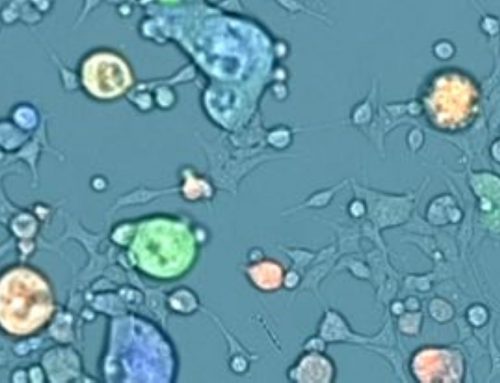Vaccines against the severe acute respiratory coronavirus 2 (SARS-CoV-2) have proven to be the best line of defense against the COVID-19 pandemic. With new variants and waning immunity occurring, especially in elderly and immunocompromised individuals, it is important to understand how to utilize the tools we have to prevent severe disease and death. Ongoing studies are being employed to determine if additional vaccine boosters are necessary. One way to test an immune response to SARS-CoV-2 is by assessing the quantity of neutralizing antibodies within the serum of vaccinated individuals. In the publication “Age-Related Immune response heterogeneity to SARS-CoV-2 vaccine BNT162b2” by Collier et. al. [1] serum was collected from vaccinated individuals initially vaccinated with one dose and then re-collected after the second dose of vaccine.
A neutralization assay was performed to determine if neutralizing antibodies were present in the serum. For this assay, cells with the ACE2 receptor are plated in a 96-well plate for 24 hours. Then vaccinated individuals’ serum is titrated in a serial dilution, and finally, four different strains (Wild type, B.1.1.7, P1, and B.1.351) of live SARS-CoV2-2 virus are added to the cells. If antibodies can stop the virus from invading the cells, then the cells in the plate will remain healthy where higher concentrations of serum are added. The authors repeated this assay with serum from individuals who received one vaccine dose versus two vaccine doses.
Once the infection is complete, the researchers used Nexcelom’s Celigo Imaging Cytometer to analyze how many cells survived the infection. The percentage of surviving cells was compared to an uninfected sample and IC50 was calculated. The Celigo can rapidly image and analyze a 96-well plate using brightfield imaging and four fluorescent channels. It can accurately count cells and determine the intensity of fluorescent proteins. In this assay, Coomassie Blue was used to detect live cells.
The neutralization assay results show that for each SARS-CoV-2 strain, two vaccine doses produced a greater neutralizing effect than a single dose.

For this study, the researchers wanted to determine if vaccinated individuals over the age of 80 had reduced immune responses compared to younger individuals. To do this, they compared the serum of older patients to younger patients when performing neutralization assays. They found that older individuals had lower titers of neutralization antibodies overall but had an increase in serum neutralization after two vaccine doses. This study justifies the use of booster vaccine shots that can increase the immune response to SARS-CoV-2. Utilizing neutralization studies is a useful first step to understanding how vaccines can protect people from severe COVID-19.
Celigo’s unique imaging technology has been routinely utilized for other common virology assays, including foci and plaque counting, quantification of antiviral resistance to drugs, and many other applications.
Want to learn more about how either instrument can benefit your virology research? Contact us for more information or schedule a live or virtual demonstration today!
Figure 1. Neutralization of SARS-CoV-2 VOCs by sera after dose 1 (1) and dose 2 (2) of BNT162b2. d, WT, n = 138; B.1.1.7, n = 135; B.1.351, n = 82; P.1, n = 82. f, WT, n = 64; B.1.1.7, n = 53; B.1.351, n = 32; P.1, n = 32. Data are shown as Geometric Mean Titers (GMT ± s.d)
References
- Collier DA, Ferreira IATM, Kotagiri P, Datir RP, Lim EY et.al. Age-related immune response heterogeneity to SARS-CoV-2 vaccine BNT162b2. Nature. 2021 Aug;596(7872):417-422. DOI: 10.1038/s41586-021-03739-1. Epub 2021 Jun 30. PMID: 34192737; PMCID: PMC8373615.






Leave A Comment